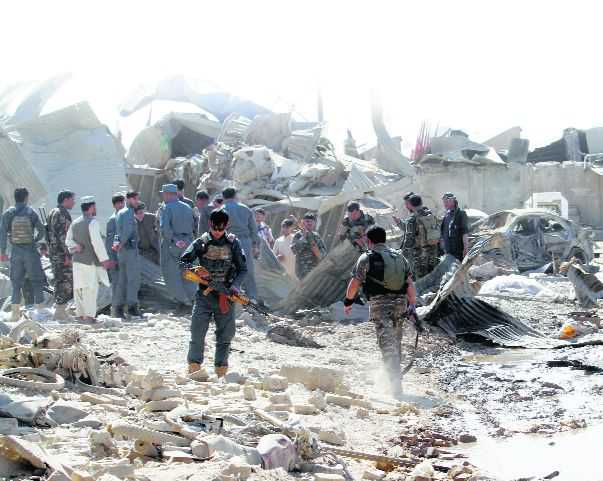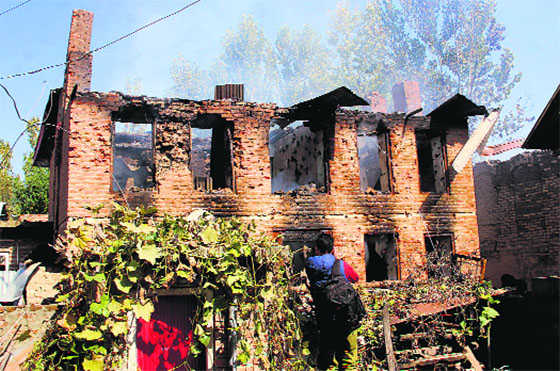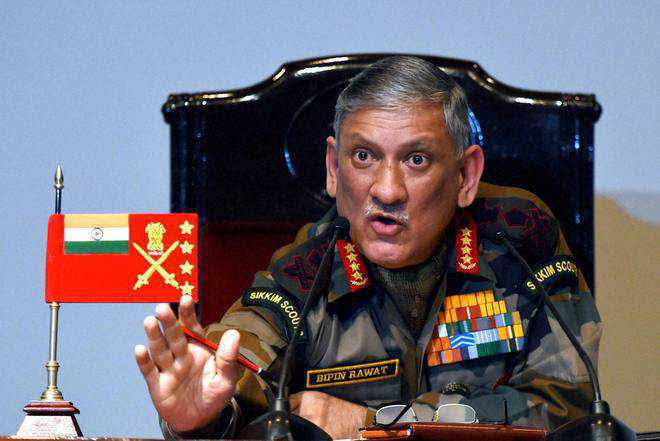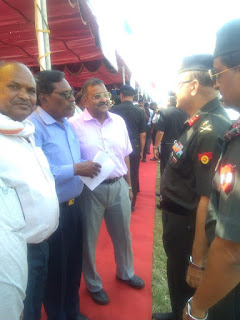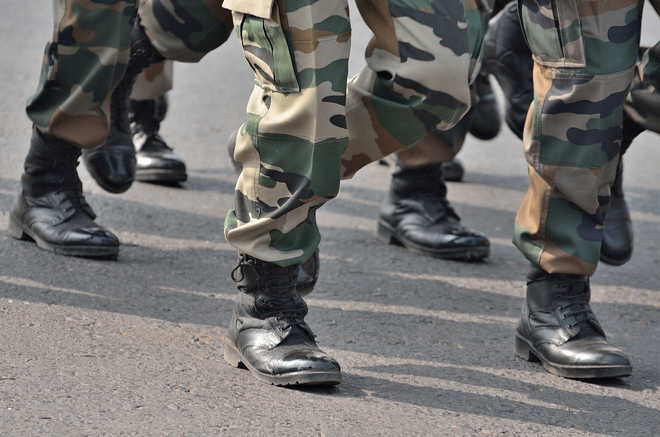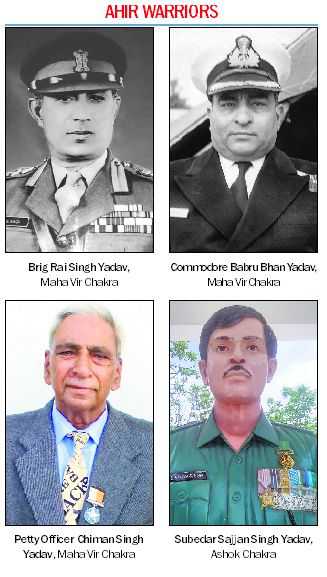
Ravinder Saini
The demand for the creation of an Ahir regiment in the Indian Army has become a hot issue in the Ahirwal region of Haryana comprising Rewari, Mahendragarh and Gurugram districts. Leaders of various political parties and representatives of social organisations are raising the issue to mount pressure on the Central Government to accede to the demand of the Ahir community.
Union Minister of State for Chemicals and Fertilizers Rao Inderjit Singh has written to Defence Minister Nirmala Sitharaman, urging her to consider the demand positively. Chiranjeev Rao, national secretary of the Youth Congress, is carrying out a signature campaign in various states to give an impetus to the issue. Besides, the Akhil Bharatiya Yadav Sewak Samaj (ABYSS), a social outfit, has already orgainsed a padyatra from Gaud-Balaha in Mahendragarh to Jantar-Mantar in Delhi in support of the issue.
Members of the Ahir community had organised a protest in Rewari city recently and submitted a memorandum, addressed to the President of India, to the Deputy Commissioner, seeking the creation of an Ahir or Ahirwal regiment in the Indian Army.
Political observers say the issue has become politically significant as people have started asking parties to include it in their election manifestoes. The ABYSS has given the slogan “Vote vahi paayega jo Ahir regiment ko laayega” to strengthen its ongoing campaign.
“No doubt, the demand for an Ahir regiment will be a rallying point in the coming Lok Sabha elections, as people are coming together in its favour. Ahirs and people of Ahirwal had played a leading role in the mutiny of 1857 and also revolted against the British in Singapore in 1939-40. Around 19,600 and 39,000 soldiers belonging to the Ahirwal region took part in World War-I and World War-II, respectively,” says Ishwar Yadav, a social activist.
He says almost all regional regiments existing today had contributed a lesser number of soldiers to the two world wars than the Ahirwal region. Besides, people from Ahirwal had also made valuable contributions to all other battles fought before and after Independence, he claims.
“Right from World War-I the Ahirwal area had been considered a nursery of soldiers. A large number of soldiers and officers from the region are still serving on various ranks in the Indian Army. I understand that post-Independence the Central Government decided not to raise any regiment on caste lines but the ban should not be extended to regiments named after areas,” says Rao Inderjit in a letter sent to the Defence Minister.
Rao says a regiment may be raised in the name of the Ahirwal region of Haryana as has been done in the case of Rajputana Rifles, and Assam Rifles that have troops belonging to all castes from their regions. The new Ahirwal regiment can also cater to all castes from this region, he adds.
Chiranjeev Rao says his signature campaign got a marvelous response in various parts of Madhya Pradesh, Gujarat and Haryana. A large number of people participated wholeheartedly in the campaign for an Ahir regiment. “The campaign will now be run in Gurugram, Delhi and Uttar Pradesh in the coming days. Since the issue also strikes an emotional chord with people of the Ahirwal region, it has the potential of becoming the deciding factor in the elections,” he adds.
Satish Khola, vice-president of the ABYSS, says that besides organizing a padyatra, they had also written to Prime Minister Narendra Modi, Union Home Minister Rajnath Singh and all MPs in support of the demand.
“When several regiments have already been formed on regional and caste lines, then why an Ahir regiment can’t be raised? People will raise the issue with political parties in the forthcoming elections,” says Khola.






















































